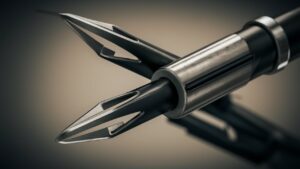Optimizing your riding mower’s performance is crucial for maintaining large properties efficiently. A well-tuned mower saves time and energy.
Large properties require special attention to keep them looking their best. Your riding mower is a powerful tool, but it needs proper care to function at its peak. From routine maintenance to smart usage tips, there are several ways to enhance its performance.
This guide will help you get the most out of your mower. With a few simple steps, you can ensure it runs smoothly and lasts longer. Ready to make mowing easier and more effective? Let’s dive into the essentials of optimizing your riding mower for large properties.

Choosing The Right Mower
Choosing the right mower is crucial for maintaining large properties. The right mower can save time and ensure a neat and tidy lawn. It is important to understand the different types of riding mowers and how to select one based on your property’s size.
Types Of Riding Mowers
There are three main types of riding mowers: lawn tractors, garden tractors, and zero-turn mowers.
Lawn tractors are the most common. They are good for lawns with less complex landscapes. They have a front-mounted engine and are easy to operate.
Garden tractors are heavier and more powerful. They can handle larger lawns and tougher terrains. They can also pull attachments for other yard work.
Zero-turn mowers are the best for speed and maneuverability. They have a turning radius of zero degrees. This makes them great for properties with many obstacles.
Selecting Based On Property Size
The size of your property will determine the type of mower you need.
For properties under an acre, a lawn tractor may be enough. They are efficient for smaller areas and easier to store.
For properties between one and three acres, consider a garden tractor. They have more power and can handle larger spaces.
For properties over three acres, a zero-turn mower is ideal. They can cover large areas quickly and handle many obstacles.
Choosing the right mower based on your property’s size ensures efficient and effective lawn care.
Regular Maintenance
Regular maintenance is essential for optimizing your riding mower’s performance. A well-maintained mower will run smoothly and last longer. Here are some key maintenance tips to keep your mower in top shape.
Cleaning The Mower
Keep your mower clean to prevent debris buildup. Grass clippings, dirt, and leaves can clog the mower. Clean the underside and blades regularly. Use a brush or hose to remove debris. Dry the mower completely before storing it.
Checking Oil Levels
Check the oil levels before each use. Low oil can damage the engine. Refer to the manufacturer’s manual for proper oil type. Change the oil after every 50 hours of use. Monitor the oil color; dark oil needs changing. Regular oil checks ensure smooth engine performance.
Blade Care
Your riding mower’s performance heavily relies on the condition of its blades. Keeping your blades sharp and replacing them when worn out ensures a clean, efficient cut. This not only extends the life of your mower but also maintains the health of your lawn.
Sharpening Blades
Sharp blades are crucial for a clean cut. Dull blades tear grass, leaving it vulnerable to diseases. You should sharpen your mower blades every 20-25 hours of use.
Use a bench grinder or a file to sharpen the blades. Ensure the blade is balanced after sharpening to avoid vibrations. If you notice uneven cuts, it’s time to check the sharpness.
Have you ever noticed your lawn looking uneven or ragged? That’s likely due to dull blades. Regular sharpening saves you from these headaches and keeps your lawn looking pristine.
Replacing Worn Blades
Even with regular sharpening, blades wear out. Look for signs like cracks or bends. Worn blades can damage your mower and your lawn.
Replace blades at least once a season. Always opt for high-quality blades suitable for your mower model. This ensures compatibility and optimum performance.
Imagine mowing a large property with a bent blade—it’s frustrating and ineffective. Swapping out worn blades for new ones makes your mowing tasks smoother and more efficient.
How often do you check your mower blades? Regular inspection and maintenance can save you time and effort in the long run. Don’t wait until your lawn starts to suffer.
Consistent blade care is a simple yet impactful way to optimize your riding mower’s performance, especially on large properties. Keep your blades sharp and replace them when needed to enjoy a well-maintained lawn.
Fuel Efficiency
Boost your riding mower’s fuel efficiency by maintaining sharp blades and regular oil changes. Proper tire pressure and clean air filters also enhance performance.
Fuel efficiency is crucial for anyone managing a large property with a riding mower. It not only helps in saving money but also ensures that your mower runs smoothly for a longer period. By focusing on fuel efficiency, you can mow more area without frequent refueling, making your task less stressful and more efficient.
Using The Right Fuel
Using the correct type of fuel is essential for your mower’s performance. Always refer to your mower’s manual to know the recommended fuel type. Generally, ethanol-free fuel is preferred as it burns cleaner and is less corrosive.
I once used regular fuel in my mower and noticed it started to stall often. Switching to ethanol-free fuel made it run smoother and more efficiently. It’s a small change that can make a big difference in performance.
Optimizing Fuel Consumption
Optimizing how your mower consumes fuel can be a game-changer. Regular maintenance like changing the oil, cleaning the air filter, and ensuring the blades are sharp can significantly impact fuel consumption.
Cutting grass at the right height also helps. Longer grass makes the mower work harder, consuming more fuel. Try to mow when the grass is dry, as wet grass adds resistance and causes the engine to use more fuel.
Have you ever thought about your mowing patterns? Mowing in a systematic pattern reduces overlapping and saves fuel. Creating a mowing plan can help you cover the property more efficiently.
Fuel efficiency isn’t just about saving money. It’s about getting the most out of your mower with less effort. What steps will you take to improve your mower’s fuel efficiency?
Tire Maintenance
Maintaining the tires of your riding mower is crucial for large properties. Proper tire care ensures a smoother ride and better traction. It also extends the life of your mower. This section covers key aspects of tire maintenance.
Checking Tire Pressure
Regularly check the tire pressure. Under-inflated tires can lead to uneven mowing. Over-inflated tires may cause the mower to bounce. Use a tire gauge to check the pressure. Refer to the mower’s manual for the correct PSI.
Low tire pressure affects fuel efficiency. It also strains the engine. Properly inflated tires reduce wear and tear. They ensure a consistent cut. Check tire pressure every month or before heavy use.
Replacing Tires
Inspect the tire treads. Worn-out tires reduce traction and safety. Replace tires with visible damage or bald patches. Choose the right size and type for your mower.
New tires improve performance. They ensure a stable ride. This makes mowing large areas easier. Consider professional help for tire replacement if unsure. Proper tires enhance the mower’s efficiency and lifespan.
Mowing Techniques
Optimizing your riding mower’s performance for large properties can be challenging. Adopting effective mowing techniques ensures a clean, even cut. These techniques help maintain your lawn’s health and appearance. Learn efficient patterns and ways to avoid obstacles for a smoother mowing experience.
Efficient Patterns
Mowing in straight lines saves time and energy. Start by mowing around the perimeter of your lawn. This creates a boundary and makes it easier to turn. Use the perimeter as a guide for straight lines. Overlap each pass slightly to ensure no grass is missed. Change the pattern each week. This prevents soil compaction and keeps your lawn healthy.
Avoiding Obstacles
Obstacles like trees, rocks, and garden beds can slow you down. Mark these areas before you start mowing. Use flags or markers to outline obstacles. Mow around them first, then proceed with your regular pattern. Be cautious near flower beds to avoid damaging plants. Keep an eye out for hidden objects that can damage your mower. Regularly inspect your lawn for debris to ensure a smooth mow.
Storage Tips
Keep your riding mower in top shape for large properties by regularly cleaning the deck and changing the oil. Check tire pressure and sharpen blades to ensure efficient mowing. Proper storage in a dry, sheltered area extends your mower’s lifespan.
Storage Tips
Properly storing your riding mower can significantly impact its performance, especially for large properties. Whether you’re dealing with off-season storage or daily maintenance, how you store your equipment matters. Let’s dive into some practical storage tips to ensure your mower remains in top shape.
Proper Storage Conditions
Your riding mower deserves a safe and clean environment. Store it in a dry, cool place like a garage or shed. Avoid areas with high humidity as it can affect the engine and metal parts.
Make sure the storage area is free from debris. Fallen leaves or dirt can clog essential components. Use a cover to protect your mower from dust and unexpected spills.
Preventing Rust
Rust is the enemy of any metal equipment, and your mower is no exception. Before storing, clean the mower thoroughly. Remove grass clippings and mud from the blades and undercarriage.
Apply a thin layer of oil to metal parts. This creates a protective barrier against moisture. Consider using a rust-preventive spray for added protection.
Are you noticing any rust spots already? Act quickly. Sand them down and apply a rust inhibitor. This proactive approach can save you from costly repairs down the line.
Storage is more than just putting your mower away. It’s about maintaining its longevity and efficiency. How do you store your mower, and what challenges have you faced? Share your experiences and let’s help each other keep our equipment in top shape.
Safety Measures
Optimizing your riding mower’s performance is essential, especially if you maintain large properties. However, ensuring you follow the necessary safety measures is equally important. Safety should never take a backseat when working with heavy machinery. In this section, we’ll discuss some important safety measures to keep in mind while operating your riding mower.
Using Safety Gear
Wearing appropriate safety gear can make a significant difference in preventing injuries. Always wear a sturdy pair of boots; they provide much-needed foot protection. Gloves are also essential to protect your hands from debris and to improve your grip on the steering wheel.
Don’t forget your safety glasses. They shield your eyes from flying particles and dust. Noise-canceling headphones or earplugs can protect your ears from the loud engine noise. You may not realize it now, but prolonged exposure can damage your hearing over time.
Reflective clothing is another great idea, especially if you are mowing near roads or in low-light conditions. It helps you stay visible to others, adding an extra layer of safety. What safety gear have you found indispensable while mowing?
Handling Emergencies
Emergencies can happen, even when you least expect it. Knowing how to handle them can save you from serious injuries. First, always have a first aid kit within reach. You never know when you might need it.
If your mower starts acting up, turn it off immediately. Continuing to use a malfunctioning mower can be dangerous. Check for any obvious issues and fix them before resuming work. If you’re unsure, consult a professional.
It’s also crucial to know how to disengage the mower quickly. This can prevent accidents if something unexpected happens. Practice this a few times so that you are prepared in an emergency. Have you ever faced an unexpected situation while mowing?
Remember, safety measures might seem like extra steps, but they are vital. Taking the time to follow these precautions can save you from accidents and keep your mowing experience smooth and enjoyable.
Frequently Asked Questions
How Can I Make My Lawn Mower More Powerful?
Sharpen the blades regularly. Use high-octane fuel. Clean or replace the air filter. Check and change the spark plug. Maintain proper oil levels.
What Type Of Mower Is Best For Large Acreage?
For large acreage, a zero-turn mower or a riding lawn mower is best. They offer efficiency and speed, ideal for vast areas.
How Can I Make My Riding Lawn Mower Faster?
To make your riding lawn mower faster, upgrade the engine, adjust the governor, or change the pulley system. Ensure regular maintenance and use high-quality fuel. Always prioritize safety.
Should I Run My Riding Mower At Full Throttle?
Yes, run your riding mower at full throttle. It ensures optimal performance, better grass cutting, and prevents engine strain.
Conclusion
Optimizing your riding mower’s performance is crucial for large properties. Regular maintenance can enhance efficiency. Use the right tools and techniques. Check the blades often. Keep the engine clean. Proper tire pressure is key. Follow these tips to ensure a smooth mowing experience.
Your lawn will look better. Your mower will last longer. Save time and effort with these simple steps. Happy mowing!








